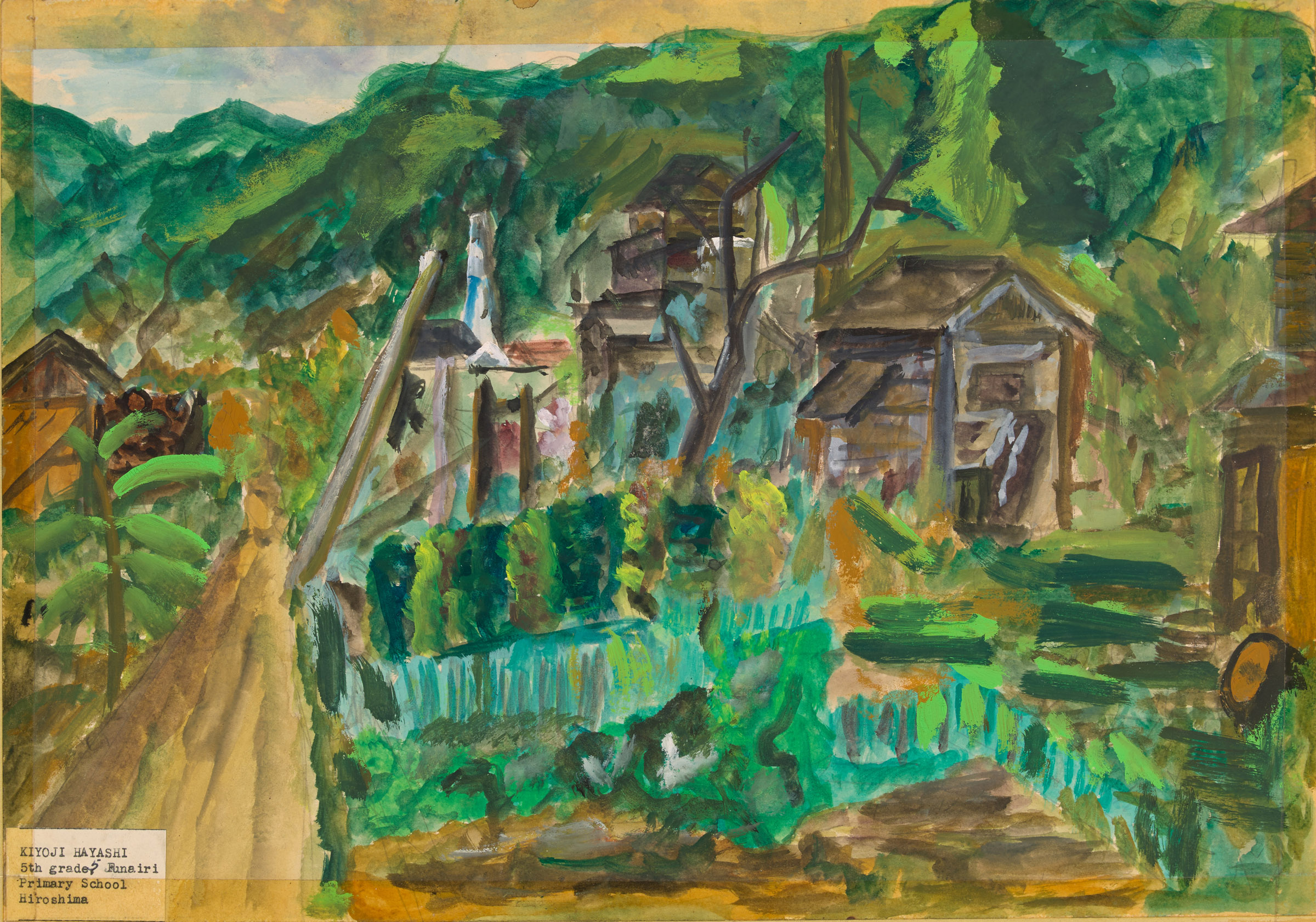Children’s drawings exhibit resilience, heritage at Postwar Hiroshima Symposium
March 31, 2017
In conjunction with the Bowdoin College Museum of Art’s exhibit, “Perspectives from Postwar Hiroshima: Chuzo Tamotzu, Children’s Drawings, and the Art of Resolution,” artists, historians and scholars will explore what it means to grow up in a city devastated by a nuclear weapon at the Museum of Art’s symposium today. The event will center on an art exchange between elementary school students in Santa Fe, New Mexico and Hiroshima, Japan in 1953, seven years after the atomic bomb rocked the island nation.
The project started when Japanese artist Chuzo Tamotzu, who lived in and fought for America during WWII, saw firsthand the post-war divisions between the two countries. Understanding unique abilities of children and art to heal tension, Tamotzu coordinated the art exchange project with Santa Fe and Hiroshima public schools with success in both countries.
 Courtesy of the Bowdoin College Museum of Art
Courtesy of the Bowdoin College Museum of Art
“Resilience is a quality that the drawings communicate quite vibrantly,” said Anne Goodyear, co-director of the Museum. “They are very much upbeat and consistent with this larger message that there is a way in which culture can continue to thrive even in the wake of something as horrific as the atomic bomb.”
Goodyear has been working on the exhibit, which opened in January, since May 2016 with a number of artists, professors and students. Co-curators Michael Amano ’17 and Ginny Crow ’18 have conducted field work in preparation for the exhibit.
Last spring, Amano studied abroad in Japan and was able to connect with and interview some of the original illustrators. Four of those individuals will speak at the symposium about the significance of the drawings and their experience in post-war Japan.
“I had all these looming questions about life in Hiroshima before I went and I was really surprised at the range of opinions,” said Amano. “Some people said they wanted the world to forget about the atomic bombs, but some people were really adamant about how we never can forget the crimes against humanity. It was such a great opportunity to engage with the history in a medium other than a textbook.”
Crow also performed on-site research. She and Goodyear traveled to Washington, D.C. and New Mexico together to learn more about Tamotzu and the historical record he left behind. Amano and Crow will both deliver opening speeches related to their fieldwork at the symposium.
In addition to the student addresses, a host of other speakers from major universities and art studios will respond to the exhibit. Most notably, artist Yukiyo Kawano will add a more personal perspective as a third generation hibakusha (nuclear bomb survivor). Kawano’s artwork reflects her strong heritage—her latest project, “Suspended Moment,” includes two life-sized sculptures of the atomic bombs that are wrapped in the silk from her grandmother’s kimono and sewed together with her own hair. Along with the sculptures, “Suspended Moment” incorporates dance, poetry and music to create a powerful, multimedia statement about the tragic history of World War II.
As a native of Hiroshima, Kawano felt an instant connection to the exhibition and worked extensively with Goodyear to put on the symposium.
“When I first saw drawings, it made me so happy,” said Kawano. “They were such brilliant, uplifting drawings in such a tragic time, and they made me want to help.”
Though the drawings date back over 60 years, Goodyear said that they demonstrate something important about the world today and hopes that viewers see their relevance.
“We are living at a moment when what it means to be an American is on people’s minds, and we are grappling with challenges to our historic commitment as Americans to accept people from around the world,” said Goodyear. “This symposium will give us the opportunity to think about what the influx of people from around the world does to enrich our culture and sound a cautionary note about letting our fears and prejudices overcome our better judgment in how we treat one another as human beings.”
The symposium will take place today from 1-4:30 p.m. in Kresge Auditorium. The exhibit will remain in Becker Gallery at the Bowdoin College Museum of Art until April 16.

Comments
Before submitting a comment, please review our comment policy. Some key points from the policy: